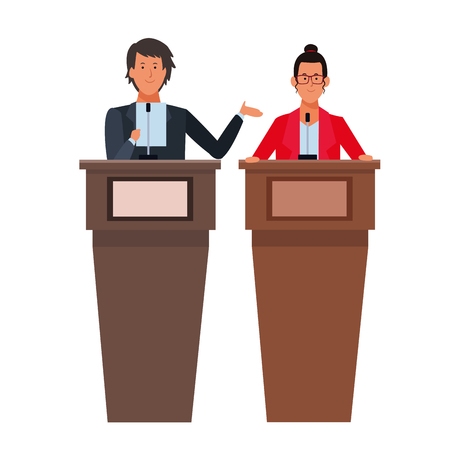1. Understanding the Appropriate Timing
After finishing a job interview, its natural to feel eager about hearing back from the employer. However, following up too soon can seem impatient, while waiting too long may make you appear uninterested. Understanding the appropriate timing for follow-up is key in the American workplace.
General Expectations in the U.S.
Most hiring managers expect candidates to wait a certain period before sending a follow-up email. This shows respect for their process and gives them time to complete interviews with other candidates. Here’s what you should know about when to reach out:
Typical Waiting Periods After an Interview
| Type of Interview | Recommended Waiting Time Before Following Up |
|---|---|
| Phone Screening | 3-5 business days |
| First Round (In-Person or Virtual) | 5-7 business days |
| Final Round/Panel Interview | 7-10 business days |
If a Timeline Was Provided
If the interviewer mentions a specific timeframe for their decision (for example, “We’ll get back to you within two weeks”), it’s best to wait until that period has passed before following up. This demonstrates that you are attentive and respectful of their schedule.
No Timeline Given?
If no timeline is mentioned, it’s generally safe to send a polite inquiry after one week. This allows enough time for the employer to review all candidates and shows your continued interest without appearing pushy.
2. Choosing the Right Communication Channel
When you’re ready to follow up about your interview outcome, picking the right way to reach out is important. In the U.S., certain methods are seen as more professional and respectful than others. Here’s a quick guide to help you decide which channel fits best for your situation:
Email: The Most Preferred Option
Email is generally the top choice among U.S. employers when it comes to post-interview follow-ups. It’s professional, gives the recipient time to respond, and creates a written record of your communication. Most hiring managers expect candidates to send an email if they want to check in about their application status.
Tips for Email Follow-Ups:
- Keep your message brief and polite.
- Mention the job title and interview date for context.
- Express appreciation for the opportunity.
- Reaffirm your interest in the role.
Phone Call: Use with Caution
Calling directly can sometimes feel intrusive or put a hiring manager on the spot, especially if they weren’t expecting your call. While phone calls can be effective in urgent situations, they’re usually not preferred unless the employer has specifically invited you to call or if there’s a time-sensitive issue.
When is a Phone Call Appropriate?
- If you’ve already exchanged phone calls with the interviewer before.
- If you were told to expect a call and haven’t received it after a reasonable waiting period.
- If it’s been several weeks without any response through email.
LinkedIn Message: A Professional Alternative
LinkedIn can be a good option if you’ve already connected with your interviewer or recruiter there. However, it’s less formal than email and may not always get noticed quickly. If you choose LinkedIn, make sure your message remains professional and concise.
Best Practices for LinkedIn Messages:
- Only use LinkedIn if you have an existing connection with the interviewer or recruiter.
- Avoid sending multiple messages if there is no response.
Quick Comparison Table
| Channel | How Its Perceived | When to Use |
|---|---|---|
| Most professional; widely accepted | Standard follow-up after interviews | |
| Phone Call | Can seem intrusive unless expected | If invited or after long silence with no email reply |
| LinkedIn Message | Less formal; good for networking | If you have a prior connection on LinkedIn |
Selecting the right communication channel shows respect for the employer’s time and helps you maintain a positive impression throughout the hiring process. Always consider what method was used most frequently during your interview process, as this can give you a clue about what’s preferred by that particular company.

3. Crafting a Polite and Professional Message
When following up after an interview, your message should always sound respectful, concise, and grateful. In the U.S., it’s important to show appreciation for the opportunity and respect the interviewer’s time. Here are some helpful suggestions on how to phrase your follow-up message so you don’t seem pushy or impatient.
Choosing the Right Language and Tone
Use friendly but professional language. Avoid demanding phrases or anything that sounds like you’re rushing their decision. Instead, focus on showing enthusiasm for the role while being considerate of their schedule.
Suggested Phrases for Your Follow-Up Email
| What You Want to Say | Respectful & Culturally Appropriate Phrasing |
|---|---|
| Ask about the interview outcome | I wanted to kindly check in regarding the status of my application for the [Job Title] position. |
| Express continued interest | I remain very interested in joining your team at [Company Name]. |
| Acknowledge their busy schedule | I understand you have a busy schedule and appreciate any updates you can provide when convenient. |
| Thank them for the opportunity | Thank you again for the opportunity to interview and learn more about your team. |
| Close politely | I look forward to hearing from you soon. Thank you for your time and consideration. |
Email Example Template
Hello [Interviewers Name],
I hope this message finds you well. I wanted to kindly check in regarding the status of my application for the [Job Title] position. I remain very interested in joining your team at [Company Name], and I appreciated our recent conversation.
I understand you have a busy schedule and appreciate any updates you can provide when convenient.
Thank you again for your time and consideration.
Best regards,
[Your Name]
4. Expressing Continued Interest Without Sounding Demanding
After an interview, its natural to want an update, but it’s important to show your enthusiasm for the position in a way that feels genuine and patient. Here are some tips to help you reaffirm your interest without coming across as pushy or impatient.
Tips for Reaffirming Your Enthusiasm
| Do | Dont |
|---|---|
| Express gratitude for the opportunity | Avoid repeated follow-ups in a short timeframe |
| Mention something specific you enjoyed discussing during the interview | Don’t demand a decision or use urgent language |
| State your continued interest in the role and company | Avoid negative assumptions about their timeline |
| Ask politely if there’s any additional information you can provide | Don’t say things like “I need an answer soon” |
Phrases to Use in Your Follow-Up Email
- “Thank you again for the opportunity to interview for [Position Title]. I enjoyed learning more about the team and your company.”
- “I remain very interested in joining [Company Name] and contributing to [specific project or value discussed].”
- “If there’s any further information I can provide to support my application, please let me know.”
- “I look forward to hearing from you when you have an update regarding next steps.”
Common Mistakes to Avoid
- Sending multiple emails within a week.
- Implying frustration or impatience with phrases like “I haven’t heard back from you” or “I need an answer soon.”
- Making assumptions about why there is a delay.
- Using overly formal or stiff language that doesn’t match the company culture.
Pro Tip:
The key is to keep your tone friendly, professional, and appreciative. Always give the employer space and time to complete their process while reminding them of your genuine interest in the position.
5. Following Up a Second Time (If Necessary)
Sometimes, even after sending a polite follow-up email about your interview outcome, you might not receive a response. In this case, its understandable to feel uncertain about reaching out again. However, when done correctly, a second follow-up can show your continued interest while maintaining professionalism and respect for the recruiters time.
Best Practices for Your Second Follow-Up
Here are some tips to guide you through reaching out again without coming off as pushy or impatient:
| Tip | Explanation |
|---|---|
| Wait Appropriately | Give at least 5-7 business days after your first follow-up before checking in again. This shows patience and understanding of their busy schedules. |
| Keep It Short and Respectful | Your message should be brief, friendly, and show appreciation for their time. Avoid sounding demanding or frustrated. |
| Restate Your Interest | Briefly mention your continued enthusiasm for the role and why youre excited about the opportunity. |
| Offer an Easy Out | Let them know you understand if they need more time or if a decision hasn’t been made yet. This reduces pressure on the recipient. |
| Avoid Over-Following Up | If there’s still no response after your second follow-up, it’s best to move on gracefully. Multiple messages may come across as pushy. |
Sample Email Template for a Second Follow-Up
If you’re unsure how to phrase your second message, here’s a simple template that fits American workplace culture:
Email Subject:
Follow-Up on Interview for [Job Title] Position
Email Body:
Hi [Recruiters Name],
I hope youre doing well! I wanted to check in regarding my interview for the [Job Title] position on [Date]. I’m still very interested in joining [Company Name] and contributing to the team.
I completely understand that these decisions can take time and appreciate all your efforts during this process. If there are any updates you can share, I’d be grateful to hear from you. If not, I look forward to hearing from you when you have news.
Thank you so much for your consideration.
Best regards,
[Your Name]
Setting Boundaries and Tone
The key is to balance persistence with politeness. By expressing understanding of their timeline and reiterating your interest without expectation, you’ll maintain a positive impression and keep communication lines open—without appearing pushy.


